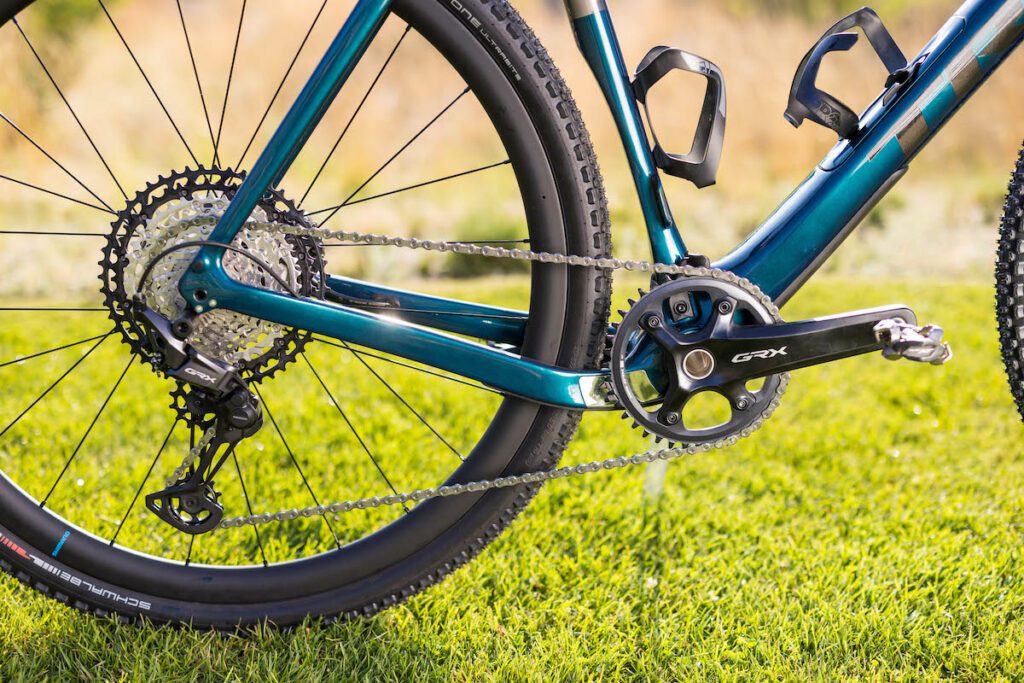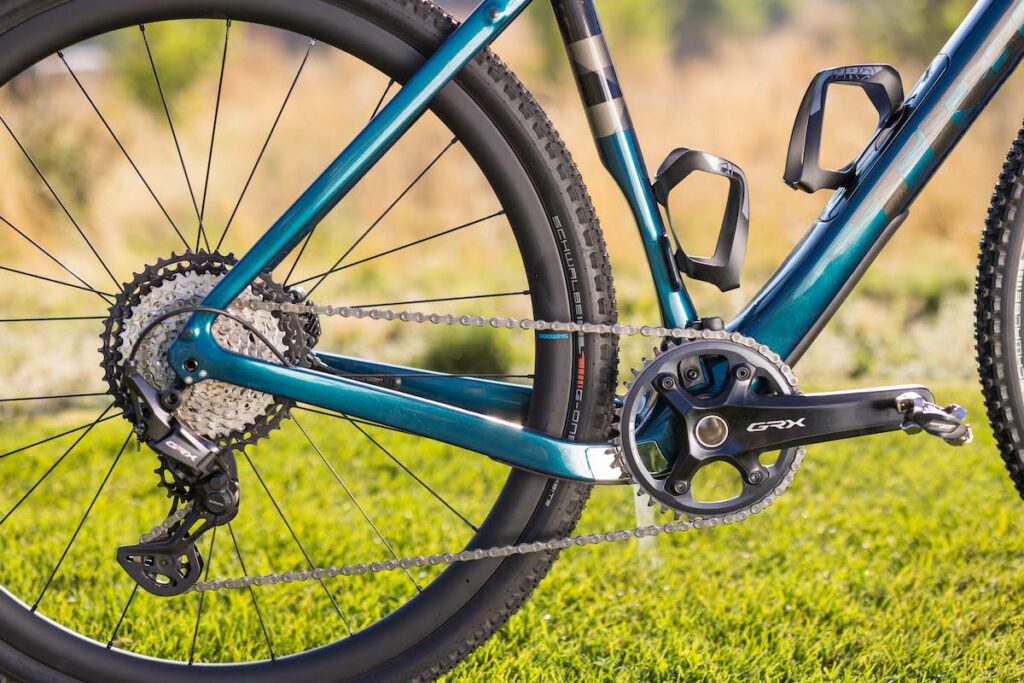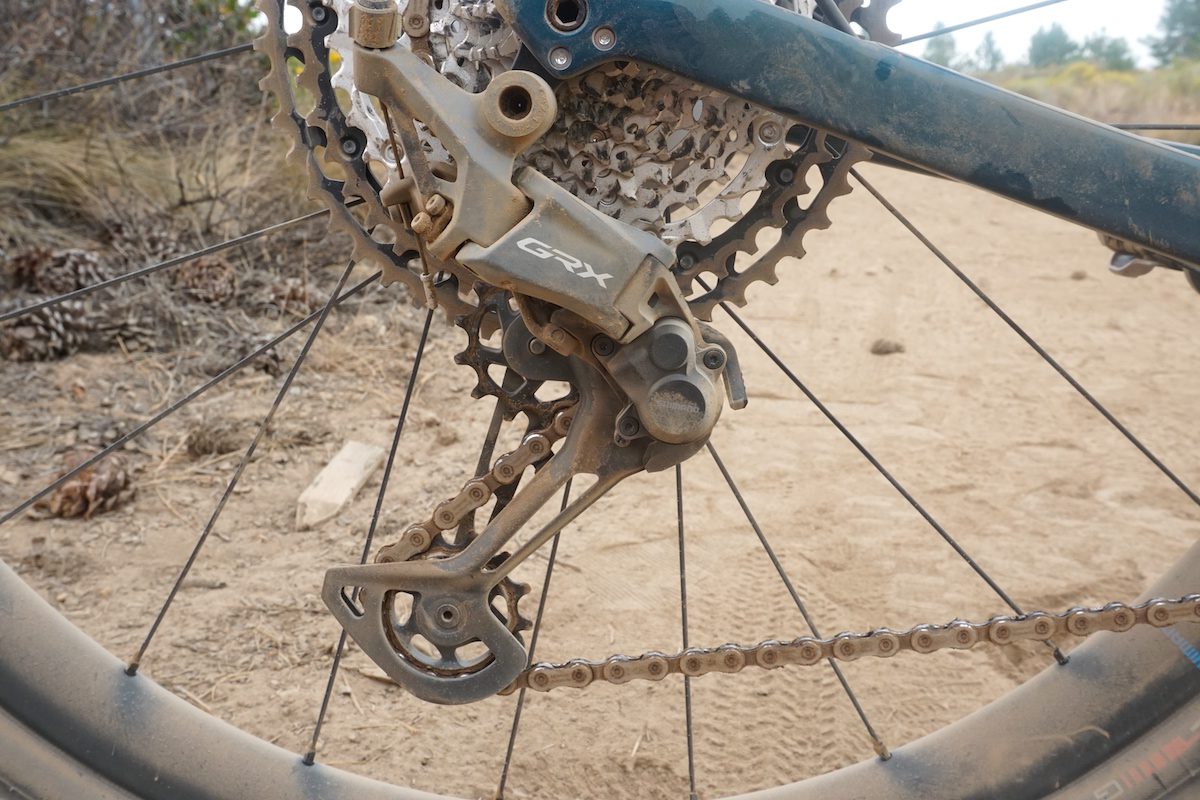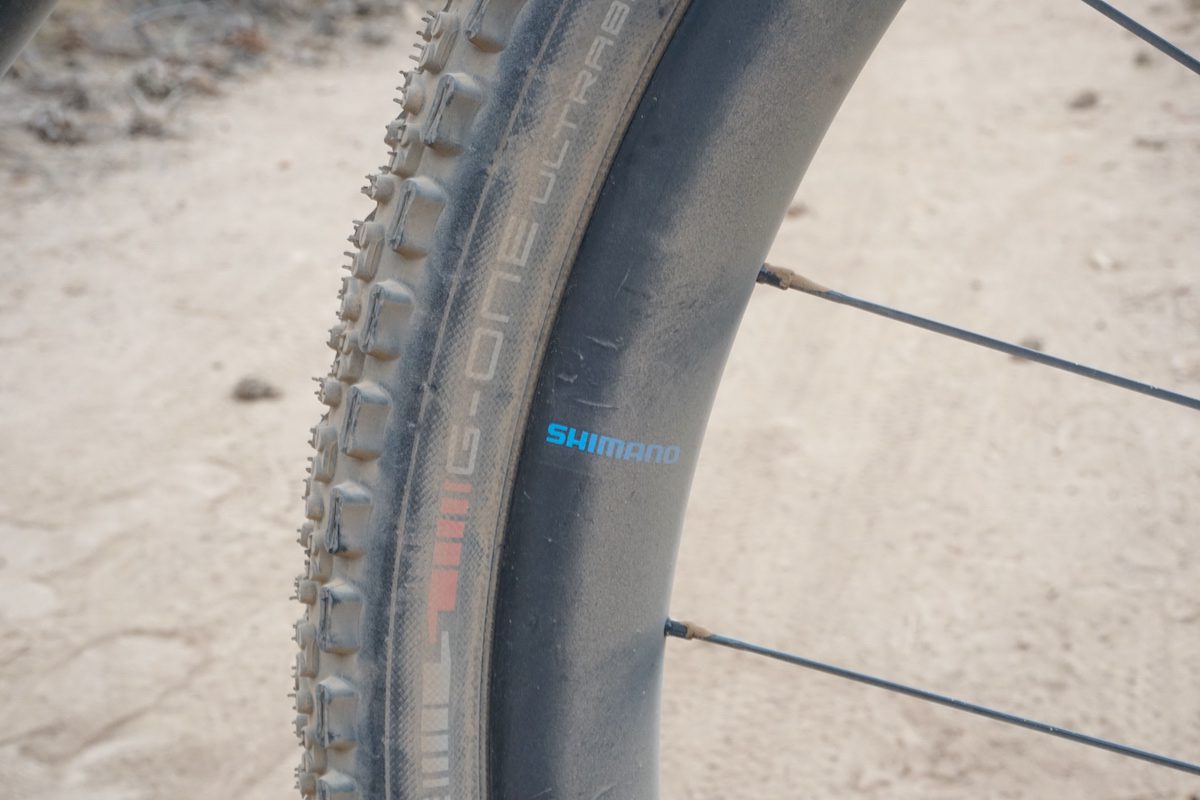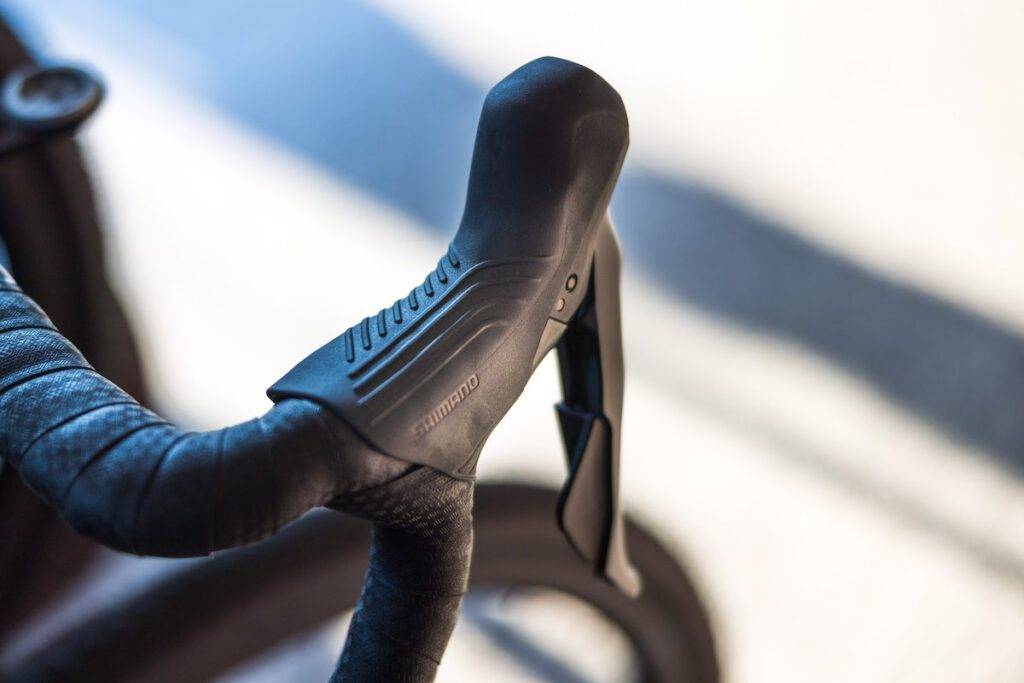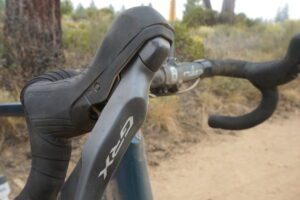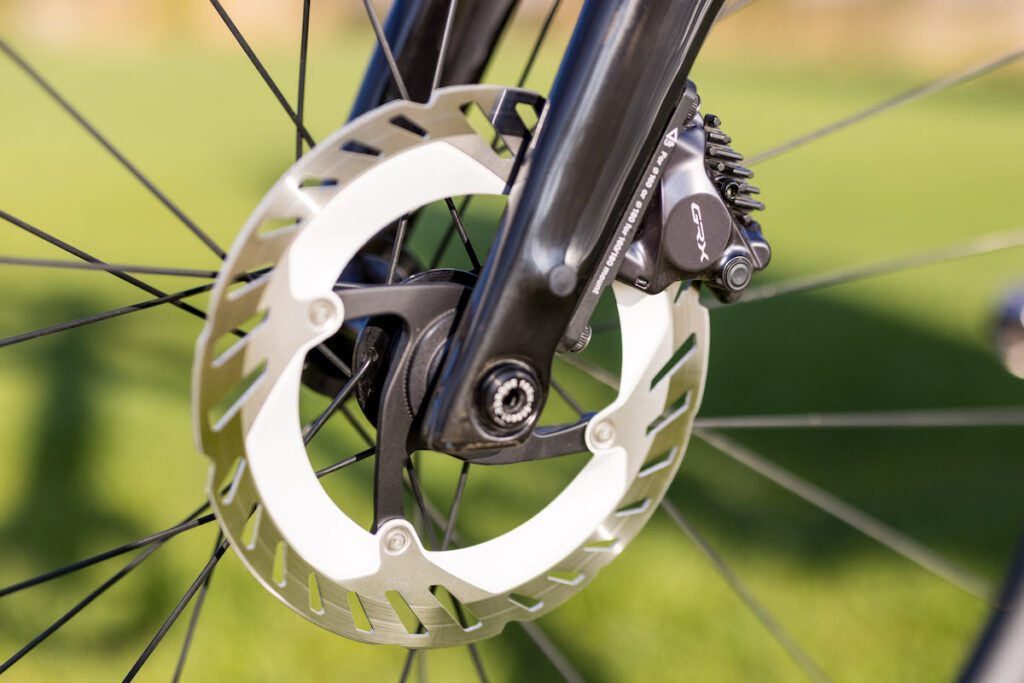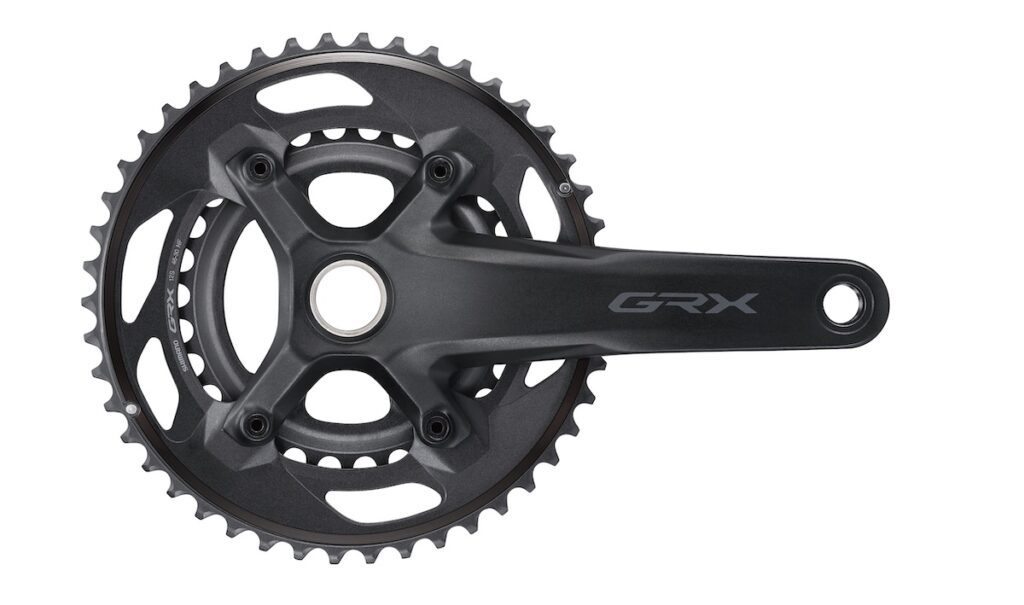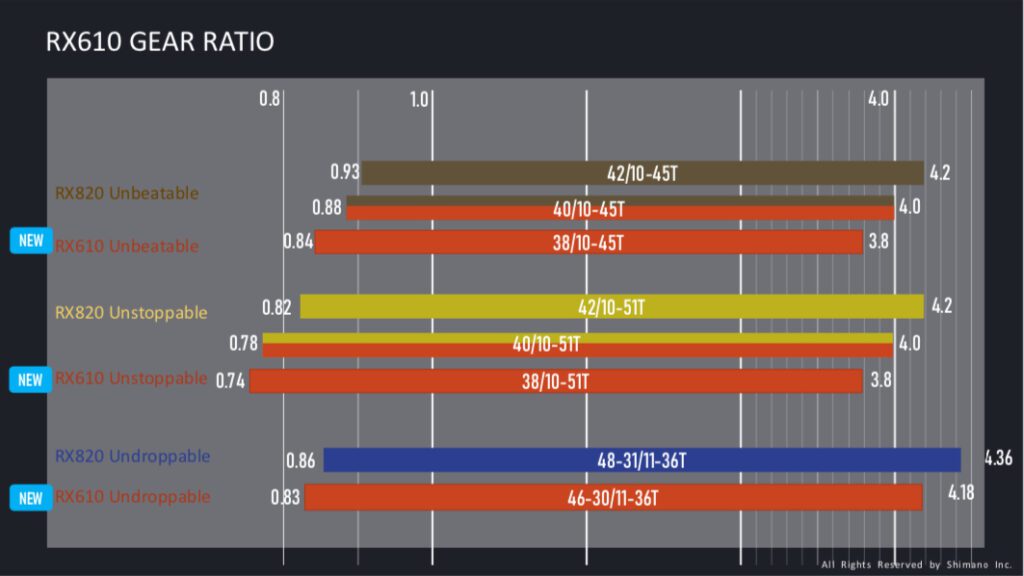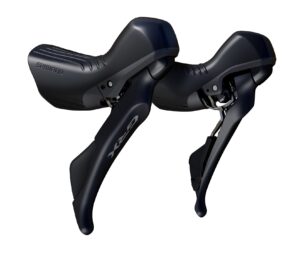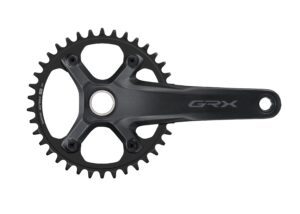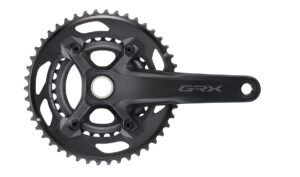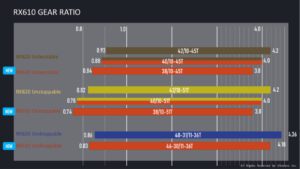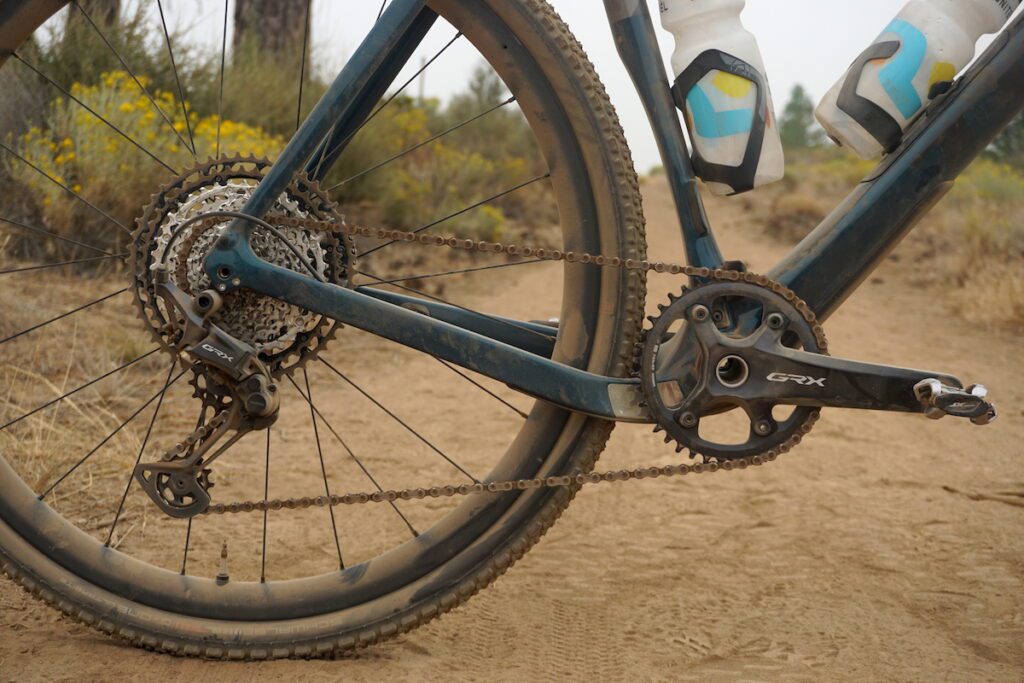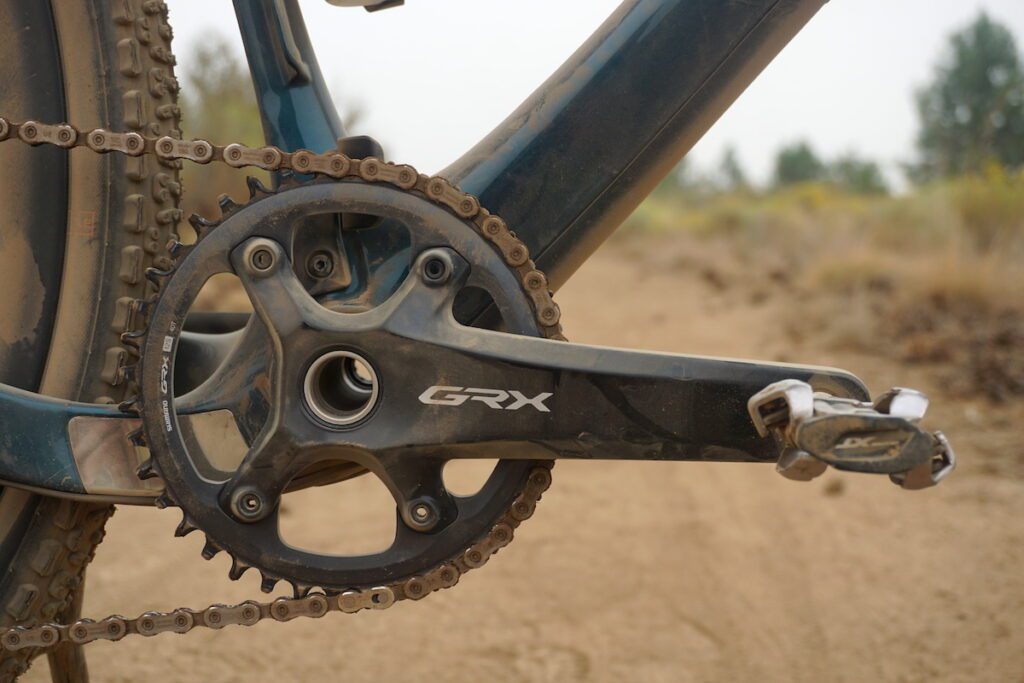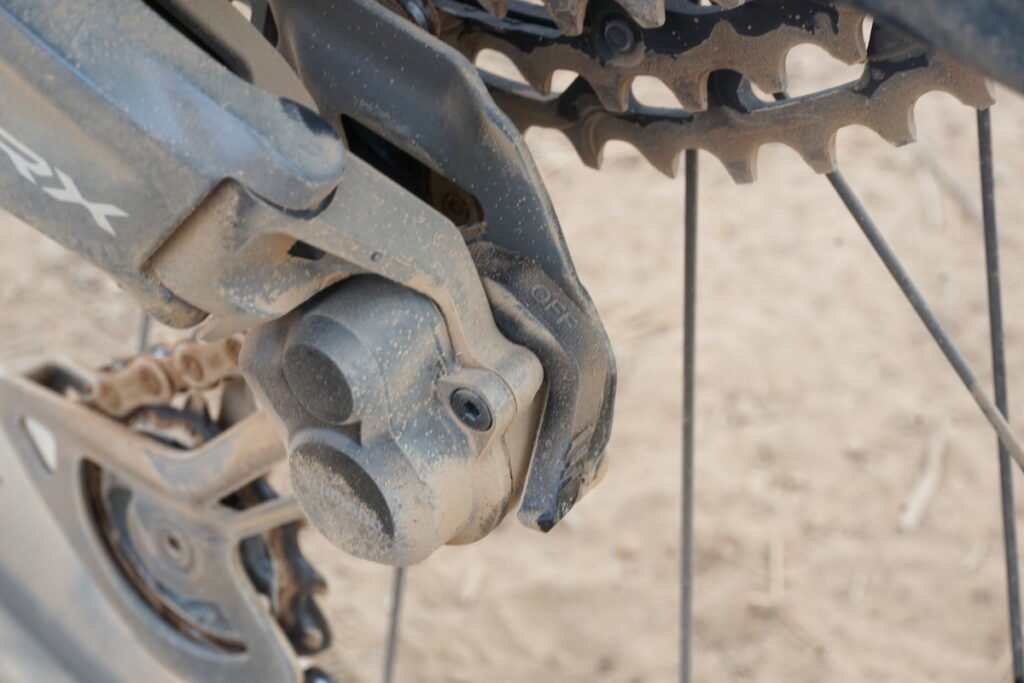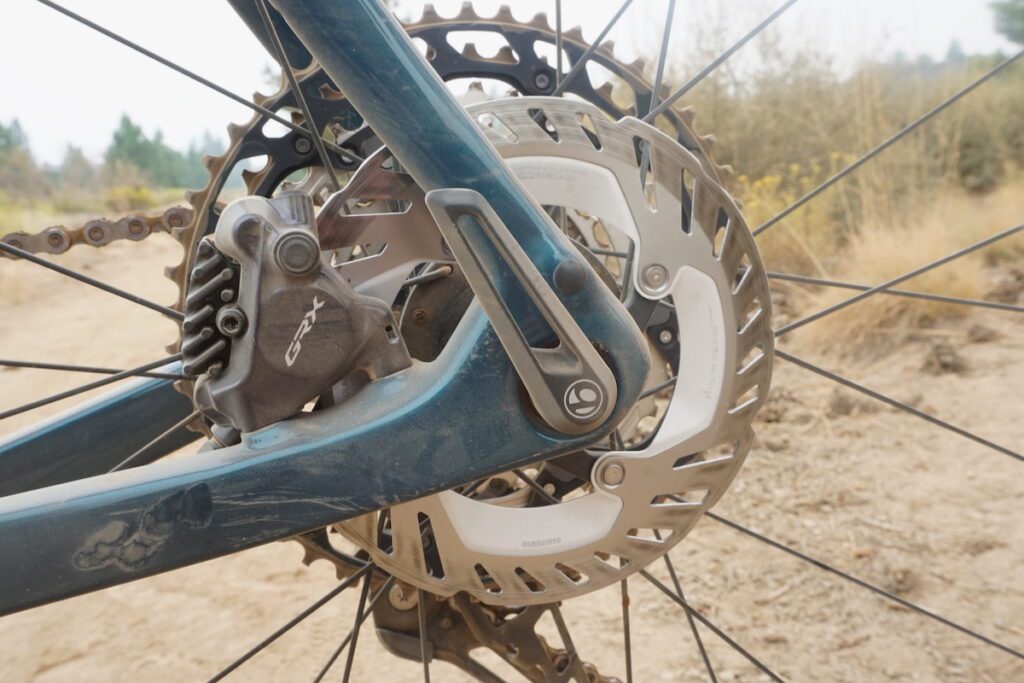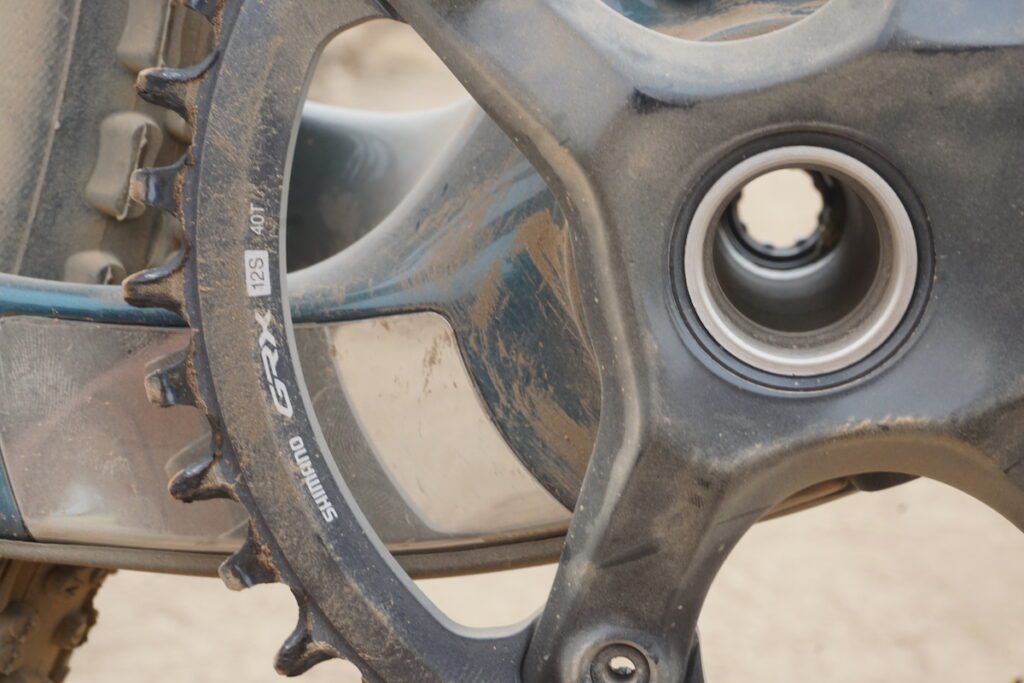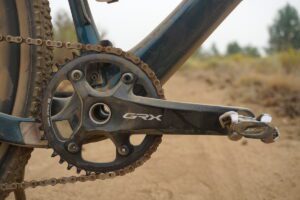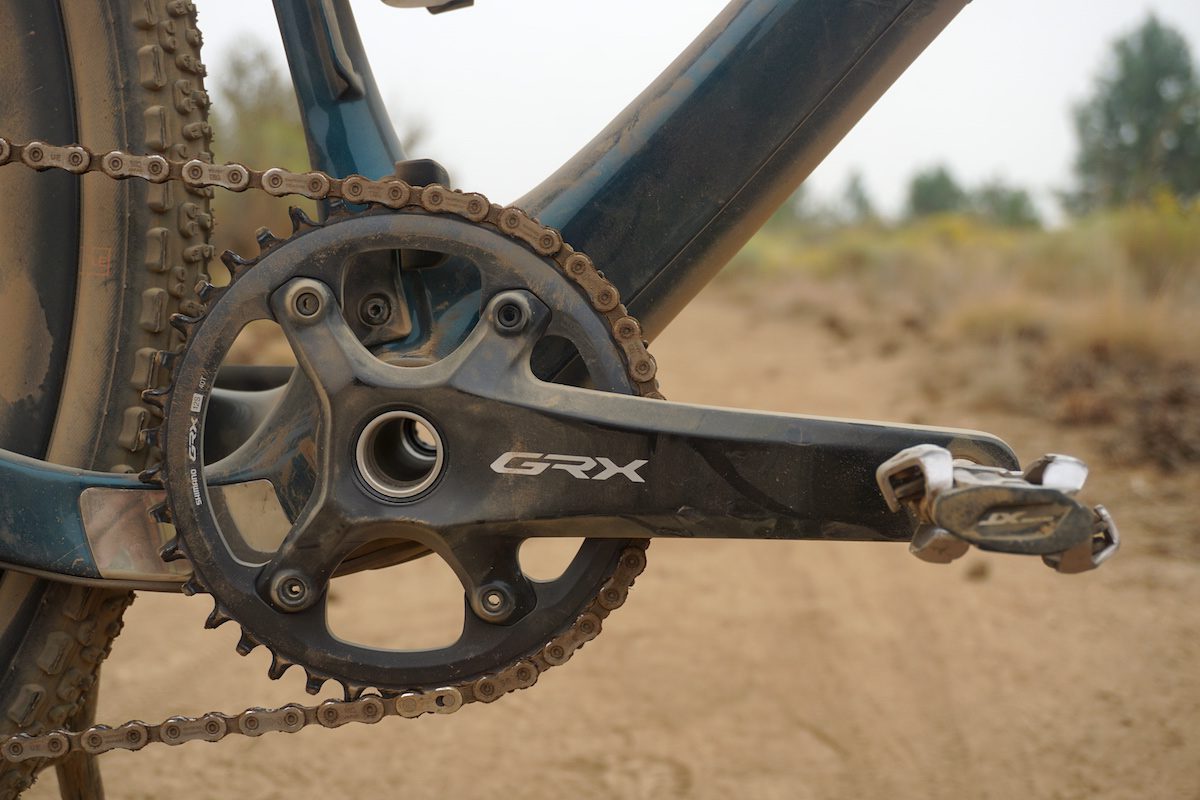Shimano GRX 12-speed finally makes the leap to 1X (but only if you’re ready)
Gravel group serves up options and a few compatibility questions but no Di2

Shimano is bringing its GRX gravel groupset up to date with a 12-speed option and, finally, a wide-range one-by setup. But, for those not quite ready to make the leap to ditch front derailleurs entirely, there is also a 12-speed two-by version of GRX coming out. In fact, there are three different versions of 12-speed GRX all being released at once. That gives riders quite a comprehensive range of gearing options in the new 12-speed gravel group. Unless you want electronic shifting, that is. The new 12-speed GRX is, for now, only available with mechanical shifting.
We had a chance to try out the 12-speed GRX group in the dust and dirt of Oregon recently and are working through a long-term test closer to home. Read on for all the details of Shimano’s new gravel group and our first impressions of the 1x wide range option.
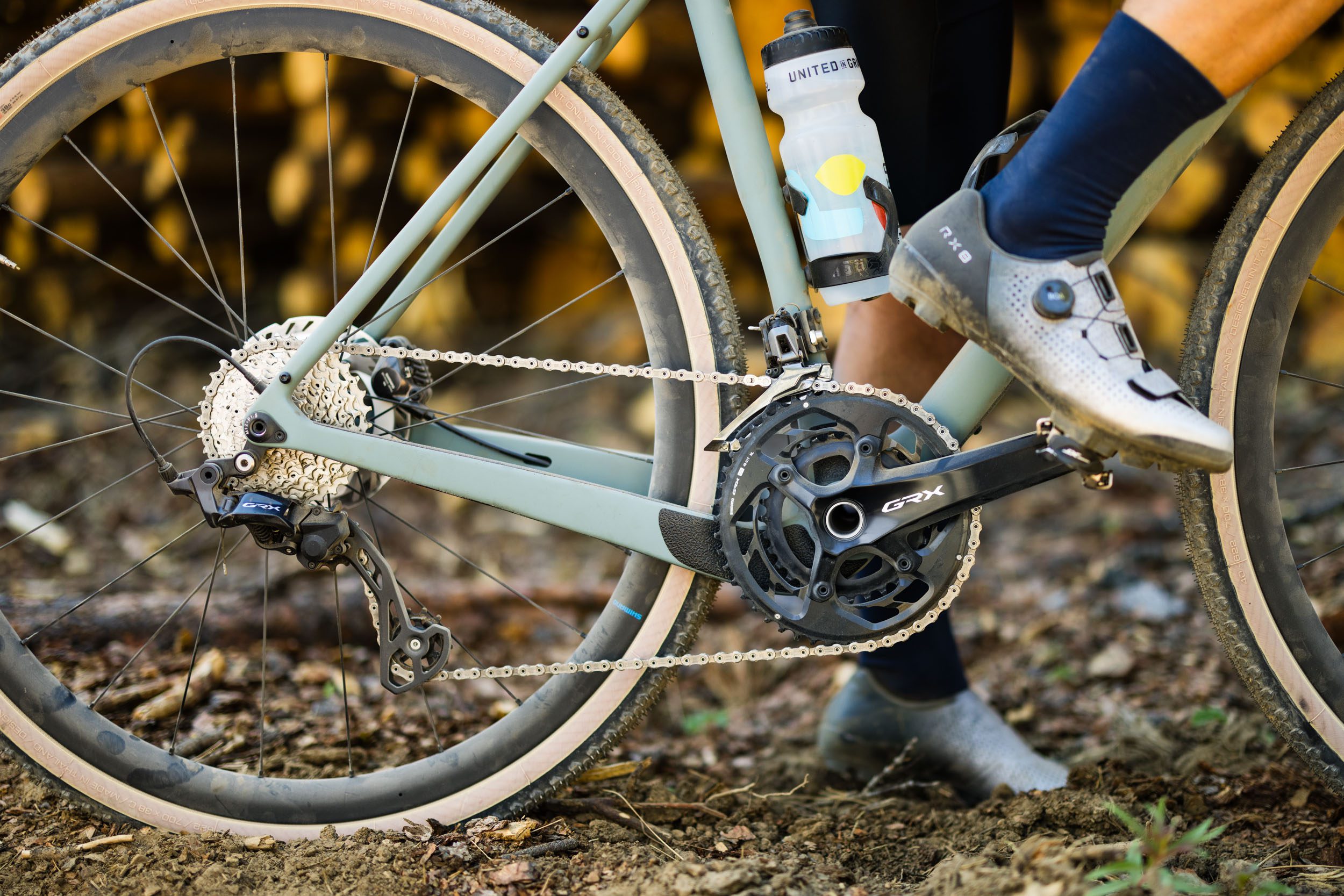
Shimano GRX: Going past 11
The major change to GRX is, of course, that Shimano finally has a 12-speed gravel-specific group to compete with its drivetrain rivals. But it’s not just one drivetrain. There are three different versions of the new 820 line (and a 12-speed GRX 610 line, too). All of this is mechanical, with hydraulic shifting. There is not a wire in sight. But, in Di2’s absence, Shimano did come up with clever code names to keep the groups straight. They are Unbeatable, Unstoppable for the two 1x options. And, with a wink and a nudge, Undroppable for the 2x group.
Undroppable: GRX keeps 2-by alive
While Shimano has faced criticism in some circles for not keeping up with competitors’ 1x options, the excellent performance of its front derailleurs has always been a solid counterpoint. The Japanese component giant is now embracing 1x, but it didn’t see any reason to let that advantage go. In fact, the front derailleur is updated with an additional 2.5mm outboard clearance for better tire and mud clearance for the new GRX.
GRX 12-speed comes with a 48-31t front chainring combo and the option of 11-34 or 11-36 cassettes. This option also comes with its own derailleur (RD-RX820) and uses the HGL2 freehub standard. That lets Shimano borrow cassettes from its road line instead of developing new gravel-specific gearing.
Unstoppable and Unbeatable: 1x two ways
There are two different 1x options for 12-speed GRX, One wide-range and one offering closer steps. “Unbeatable” uses a 10-45-tooth cassette, offering closer steps but still a reasonable range. “Unstoppable” offers the full, 10-51-tooth cassette used in Shimano’s 12-speed mountain bike range for those who want gearing to power across flats and spin up the steepest access roads.
Each requires a different configuration of the rear derailleur. The two options share the same main derailleur body but the 10-45 cassette works with the RX822GS cage while the 10-51 requires the RX822SGS cage. Shiamno says SGS is not just a longer cage, but uses different pulley positions to optimize shifting for the different 12-speed cassettes. In a smart move, the derailleur cage is interchangeable. So, if you want to switch between mid- and wide-range gearing all you need to change is the derailleur cage instead of the whole rear mech. Shimano also pointed out that the 1x options use the same crank arm as 11-speed GRX, meaning any current GRX riders that want to upgrade to 12-speed have one less part to upgrade.
Adding a 10-t0oth rear cog means that Shimano has to move 1x GRX configurations to its mountain bike MicroSpline freehub standard. GRX also uses its mountain bike cassettes (it ships with XT). So riders will have options to upgrade, or save some coin when it comes time to replace a cassette.

Since dropping the front derailleur frees up the left side brake lever body, Shimano offers two options. One has the shift paddles completely removed. The other replaces shift paddles with a dropper post lever, so you don’t have to run weird drop-bar dropper post levers. Since dropper posts require a different function and throw (8.3mm vs 10mm) from the lever than shifting, this is an entirely different shifter body than the GRX 12-speed 2x left brake lever body. All three have their own, very Shimano part number.
All GRX use the same 12-speed chain (CN-8100), adding some simplicity to the mix of standards.
HG-L2 or Microspline? 11-speed?
You will surely have noticed that the 1x and 2x 12-speed GRX options use different freehub standards. 2x GRX uses HGL2 borrowed from the road while the two 1x options use the MicroSpline standard from Shimano’s mountain bike groups. That means riders will have to commit to 1x or 2x gearing from the start and, since there are different left brake levers and rear derailleurs, are pretty committed to that choice.
The flip-side is that this route means Shimano can just use cassettes from its road and mountain bike lines instead of developing new gravel-specific options (though that was apparently something that was considered).
Anyone looking to bring over a fancy set of 11-speed wheels might find 2x GRX more appealing as it those 12-speed cassettes are backward compatible with HGL 11-speed freehub bodies.
It’s also worth noting that the GRX MicroSpline freehub bodies are not interchangeable with freehub bodies from mountain bike groups, though the cassettes are. While the external cassette interface is the same, the GRX freehub body is different internally as it is attached to a hub with different axle spacing and widths. You also can’t use GRX shifters with a 12-speed mountain bike rear derailleur (or vice versa) as the gravel and mtb groups use different cable pull ratios.
Shimano will also continue supporting 11-speed GRX groups, mechanical and electronic Di2. That keeps options open for riders who don’t want to ditch 11-speed or don’t want to lose electronic shifting.
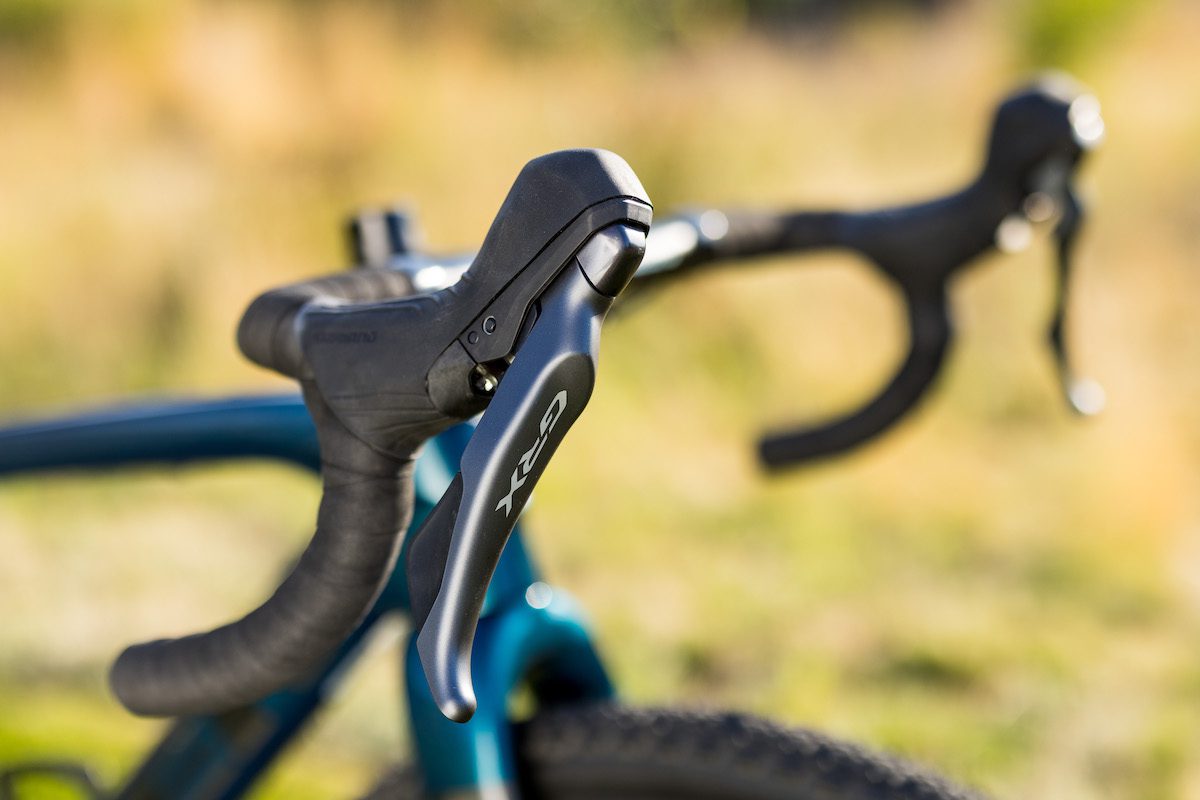
No Di2, for now
The most surprising part of Shimano’s move to 12-speed GRX is that there is no option for electronic shifting. With so much emphasis on electronics in every part of cycling, it seems like a surprising omission, or at least a conspicuous absence, from the re-launch of GRX.
According to Shimano, this was intentional. It says it “strongly believes” that 75 per cent of its market for GRX prefers mechanical.” They wanted to focus on serving the bulk of the market first, though they also noted that they pioneered electronic shifting. Mechanical also suits a broader range of gravel riders, especially those venturing further into the wilderness, further from recharging opportunities and further full-service bike shops.
Will there be 12-speed GRX Di2? Of course. Just not yet. Shimano wasn’t willing to commit to or share any timeline for an electronic version of the 12-speed gravel group. So wait if you want, but there is no saying when it will arrive.
New GRX: not just 12-speed
The new GRX group isn’t just an extra gear and more gearing options. Shimano’s also updated the hood shape, the brake calipers and updated the non-series RX-880 wheel with this launch.
The hood shape is now angled slightly so that, when mounted on the flared bars that are increasingly popular among gravel riders, the tops are flatter. It’s the same shape and grip as before, just with the tops tilted slightly so they stay at a more comfortable angle on flared bars. Shimano says its new “neutral” is a 16-degree flare.
The new brake calipers use 10 per cent wider pad clearance. This is supposed to reduce brake noise and rubbing when the brakes heat up on long descents. GRX also comes with Ice Tech Freeza rotors with aluminum carriers that are said to help expel heat and help the rotor hold shape instead of warping or expanding under heat (eliminating that “tik-tik-tik” sound you hear after hard braking).
Finally, the RX 880 wheel is updated to offer interchangeable freehubs – MicroSpline or HGL2 12-speed freehubs only – in a first for Shimano. As before, the wheel uses a 25-mm internal rim width, is 32 mm deep and ranges from 1,391 to 1,397-grams per pair, depending on which freehub you use. It is a 12-speed only wheel, it is non-series (not GRX specific) and Shimano wasn’t even sort of interested in sharing specifics about degrees of engagement beyond “fast enough.”
GRX 610 joins the 12-speed party
Shimano is also bringing the lower-cost GRX 600-series up to 12-speeds. The new 610-series is comprised of just shifter bodies and cranks. All other parts are shared with the higher-end 820-series GRX.
There are a few differences, too. GRX 610 uses the old hood shape and comes in a slightly darker colour. So if you really don’t like flared bars and don’t want your hood shape adjusted for that, 610 is your road into 12-speed GRX. 610-series also opens up a wider range of price points for GRX 12-speed. 610 does get the upgrade to textured hoods that were missing on 11-speed GRX 600-series. With steel construction replacing alloy in several places, the 610-series will, as you might expect, be slightly heavier.
610 also offers a different range of gearing options. A 46-30 chainring combo replaces 820’s 48-31 while 1x riders get the additional option of a 38t chainring.
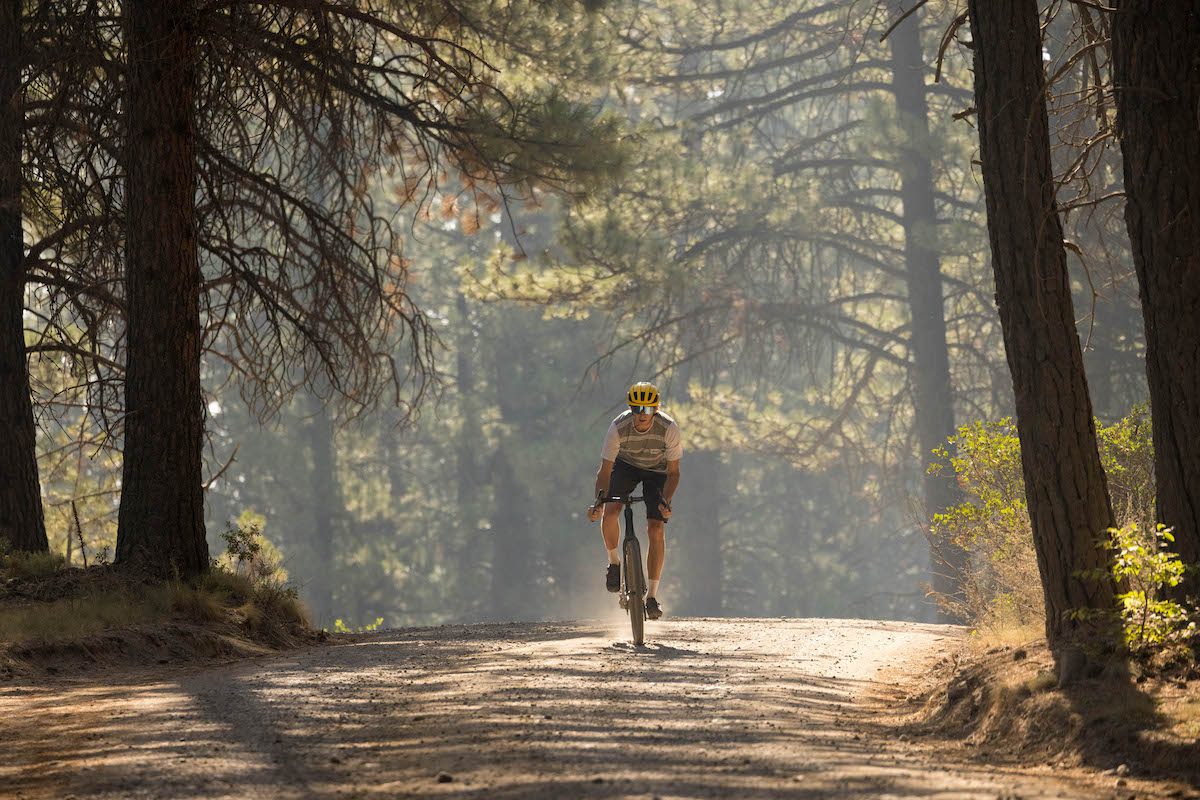
Gravel tested: GRX in Oregon
We had the chance to test Shimano’s new gravel group on the dusty roads and sandy trails of Bend, Oregon. While we’ve brought a group home with us for long-term testing, there are a few things that are immediately obvious.
The shifting is sharp and quiet, even when shifting under power. In fact, the groupset is remarkably quiet in general. Even as our group bounced along Bend’s cruisier trails and rattled along stretches of washboard gravel, the drivetrain was silent thanks to the Shadow RD+ clutch. I tried to push that by powering through washboard and shifting as recklessly as I could, and GRX kept up without complaints or sounds.
Not perfect, not hard to adjust
Our group did have to twist a couple barrel adjusters over the course of a few hours, myself included. I realized shortly after that it was actually the rear through axle that was loose, not the shifting. Tightening the axle and twisting the barrel adjuster back had the bike shifting nicely again. No one had to pull out a phone and open an app or figure out how to micro-adjust. And, until the group hit a stopping point, I could adjust my shifting to make up for the misalignment. Not a Shimano-specific argument, sure, but a good hint at why Shimano might have opted for cables over wires for a groupset meant to head far off grid.
The brakes retain the excellent feel and easy power from the hoods. There wasn’t much of a test on our ride in terms of elevation, but temperatures were well into the high 30s Celsius. The brakes didn’t fade or rub while we were riding, though there wasn’t too much of a test.
First impressions: worth the wait
With the different freehub bodies, HGL2 and Microspline, dividing 1x from 2x GRX, Shimano has essentially created two versions of its gravel group with limited cross-compatibility. Viewed charitably, this is a result of Shimano developing GRX as a meeting point of road and gravel (riders and technology) where everyone has a “home” groupset instead of forcing the gravel crowd in either direction. While I don’t love multiple standards under one group, I do like options. And having the option of proper wide-range shifting or the close steps and range of 2x shifting is a welcome choice.
Shimano didn’t exactly rush GRX into 12-speed and the results of that patience are as good as you’d expect. It’s also not Shimano’s first go at 12-speed or wide-range shifting, following – and borrowing heavily from – the brand’s road and mountain bike groups. So it shouldn’t be surprising that GRX works quite well over the first couple of rides. Any new 12-speed group should, at this point. But GRX rolls out of the gates with the precision and smooth feel that fans have come to expect from the Japanese brand. The test will, of course, be in long-term durability.
GRX 12-speed: Pricing, weights and availability
In a big shift for Shimano, the new 12-speed GRX is available as you read this story. The new gravel group should be in select stores on release day.
Pricing varies slightly for the 820 group, depending on which options you choose. The 1x groups are both $2,275.90 with the integrated dropper post lever or $2,235.90 with the brake-only lever. Weights run from 2,822 grams for the mid-range 10-45t without dropper to 2,899.5 grams for the wide-range 10-51 group with the integrated dropper.
The complete 2x GRX 12-speed is $2,290.89 and weighs in at a claimed 2,961.5 grams.
GRX 610 12-speed drops the price for a complete group to $1,965.40 for a 1x setup or $1,754.39 for the 2x. Shimano did not provide claimed weights for that group.
Shimano’s RX-880 12-speed wheel costs $2,130 in Canada ($960 front, $1,180 rear if you want to buy them separately).
